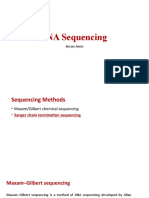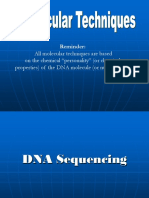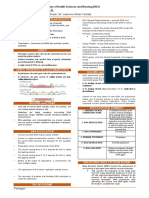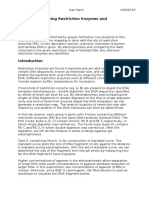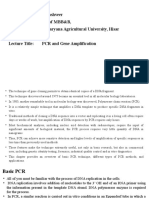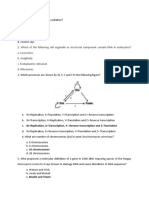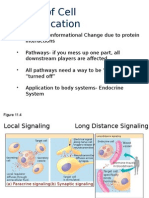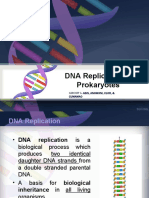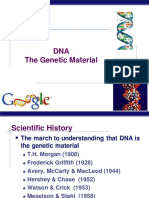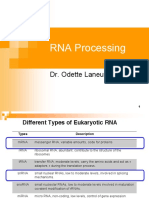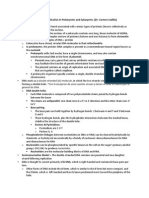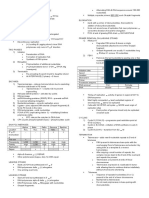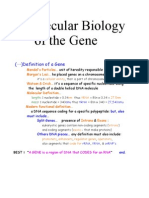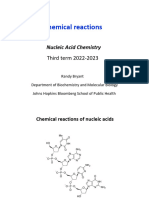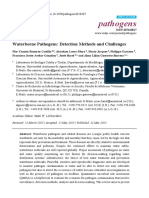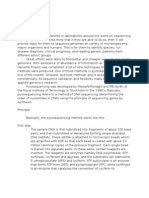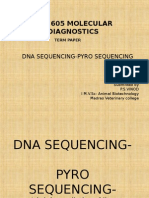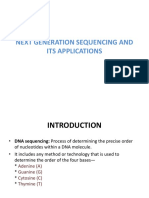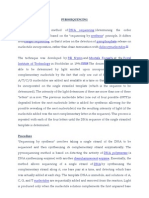0% found this document useful (0 votes)
94 views67 pagesDNA Sequencing Techniques
This document provides an overview of DNA sequencing techniques, including:
- Sanger dideoxy DNA sequencing, which uses DNA polymerase, dNTPs, and low concentrations of ddNTPs to terminate DNA synthesis and generate a ladder of DNA fragments that can be read to determine the sequence.
- Automated DNA sequencing using fluorescently labeled ddNTPs separated by capillary gel electrophoresis and detected with a fluorescence detector to produce a DNA sequence trace.
- Improvements to DNA polymerases like Sequenase and Taq polymerase that make them better suited for DNA sequencing by removing or modifying 3'-5' exonuclease activity.
Uploaded by
Chen ZhonghaoCopyright
© © All Rights Reserved
We take content rights seriously. If you suspect this is your content, claim it here.
Available Formats
Download as PDF, TXT or read online on Scribd
0% found this document useful (0 votes)
94 views67 pagesDNA Sequencing Techniques
This document provides an overview of DNA sequencing techniques, including:
- Sanger dideoxy DNA sequencing, which uses DNA polymerase, dNTPs, and low concentrations of ddNTPs to terminate DNA synthesis and generate a ladder of DNA fragments that can be read to determine the sequence.
- Automated DNA sequencing using fluorescently labeled ddNTPs separated by capillary gel electrophoresis and detected with a fluorescence detector to produce a DNA sequence trace.
- Improvements to DNA polymerases like Sequenase and Taq polymerase that make them better suited for DNA sequencing by removing or modifying 3'-5' exonuclease activity.
Uploaded by
Chen ZhonghaoCopyright
© © All Rights Reserved
We take content rights seriously. If you suspect this is your content, claim it here.
Available Formats
Download as PDF, TXT or read online on Scribd
/ 67
